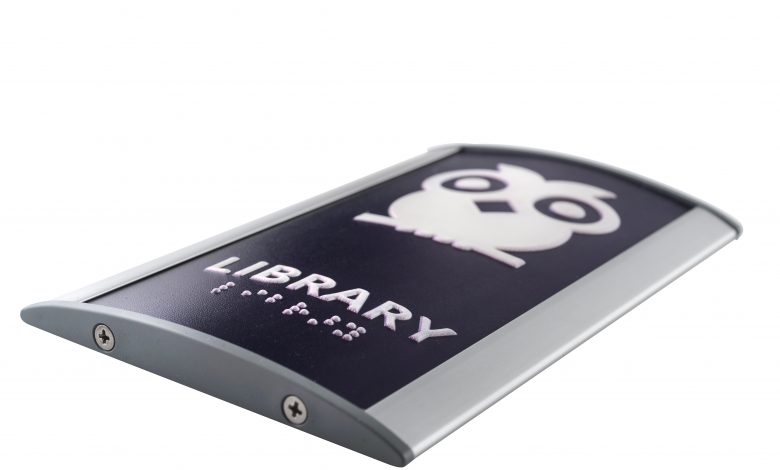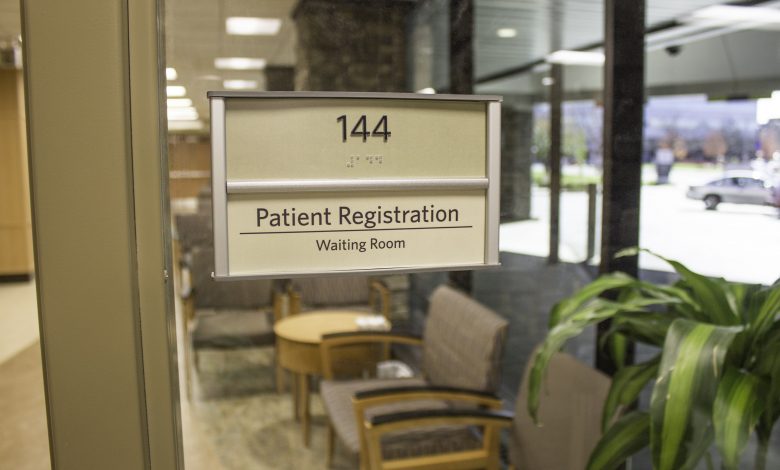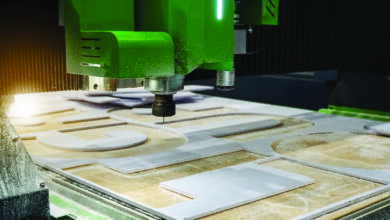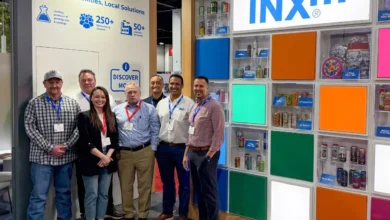ADA signs are required to identify restrooms, conference rooms, offices, exits, and stairwells, but sometimes building owners want to make changes to their signage system without buying a whole new set of signs.
Manufacturers often recommend modular signs instead of something that is static or custom-built, so that content changes can be made quickly and efficiently at a more affordable price point. Modular signs are common at universities, hospitals, medical facilities, and office buildings.
“It’s still unique, but you didn’t buy a custom-made sign,” says Alon Bar, Vista System, a manufacturer of interchangeable static wayfinding systems and aluminum sign frames. “It’s giving you a better price for something that looks custom.”
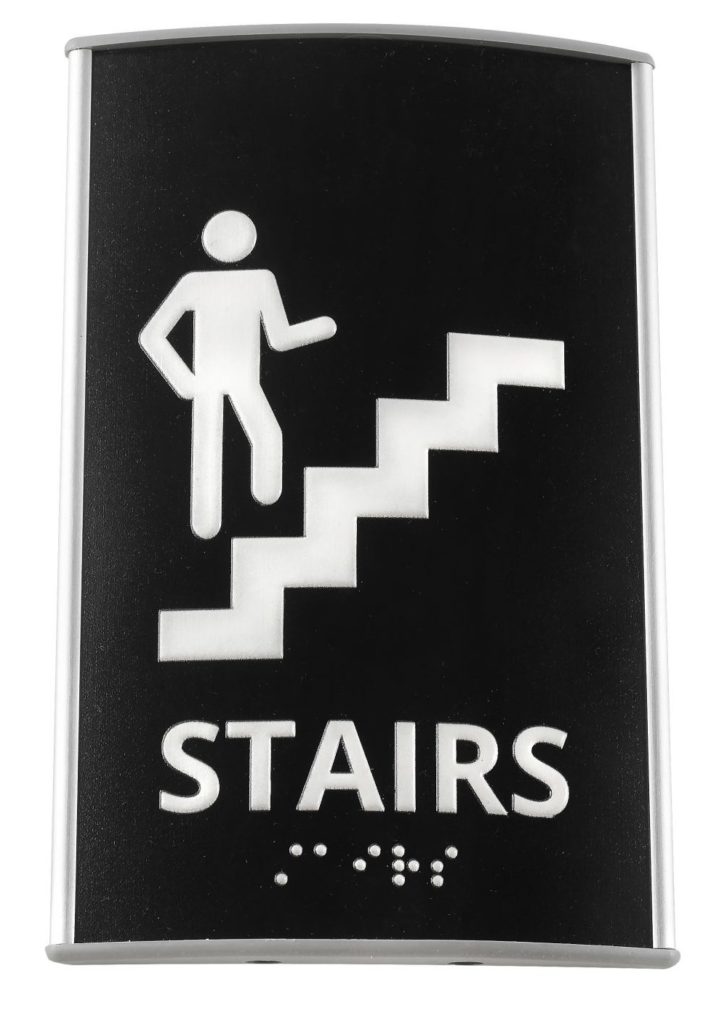
The American Disabilities Act requires that publicly accessible buildings include Braille on interior signs that mark or identify rooms with permanent functions. The requirement does not extend to signs that are suspended or projected and out of reach of the end-user. The ADA, which was passed in 1992, had a rule change in 2010 requiring that the Braille fonts used on signs are sans serif for easier readability.
“Room identification signs are by far the most common modularly constructed ADA-compliant signs. And for good reason,” says Jeffrey Stewart, vice president of sales for Howard Industries, a sign manufacturing company. “Room occupants and purposes change very often for businesses and institutions. A room being used as storage may become an office in the future, and modular signs allow these changes to be made quickly and easily.”
ADA signage requirements
ADA-compliant signs need to be located on the latch side of the door, but the exact placement has some flexibility based on the location of the sign copy, says Vince Cvijanovic, co-owner of Graphic Components, an interior sign manufacturer. Generally, the center of the sign should be 9″ from the latch or handle side of a doorframe, and the baseline of the sign, or the lowest line of text, should be 48-60″ from the floor.
“Given the permanent nature of the ADA sign and the space variation required to fit the text, modular signs easily meet the needs required to frame, remove, and reinstall,” says Charlie Kelly, president and owner of Clarke Systems, a wholesale provider of interchangeable static wayfinding systems. “By definition, a typical modular sign system provides flexibility and changeability regardless of the design requirements.”
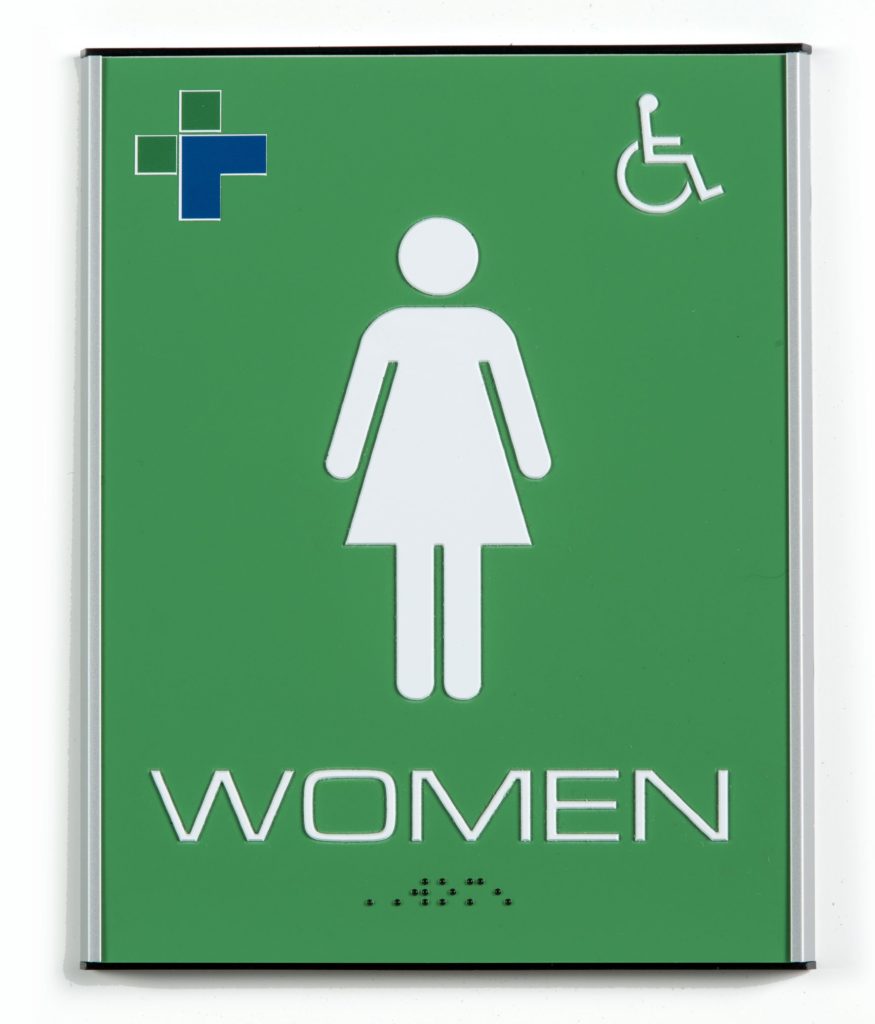
Modular signs, such as door, projecting and suspended signs, and directories, are designed to use the same parts and pieces for a variety of situations while retaining a consistent look, Kelly says. The result is a uniform design for ADA and other types of signs.
“Some modular sign systems allow message updates to be made right in-house by simply replacing a paper insert. Others have changeable components that can be used to replace existing ones,” Stewart says, explaining that the components typically are ordered to replace existing ones, requiring a longer timeframe than already having a paper insert on hand. “Both scenarios protect the end-user from having to remove signs from the wall, thus preventing paint and/or drywall damage.”
Benefits of the paper insert
ADA modular signs with a paper insert consist of a retainer or frame (typically made out of aluminum for its moldability) that is attached to the wall and a plastic or clear cover that can be opened to slide in the insert. The retainers can be flat, curved, recessed, and something called pucks or standoffs, which are cylindrical in shape and mount to the wall with an ADA plate attached.
The paper insert is removable to allow for changes to the written content of the sign, such as for a new room occupant or number change or if the function of the room changes, without altering the ADA content. The plastic cover is what has the Braille on it, the most expensive part of the sign.
“It’s a big deal if you need to change the number or name to find the same font or look, so it doesn’t suddenly look different,” Bar says.
Other changes to the paper insert can be made to the color, graphics, and background images. The clear cover is then put back on over the paper insert for the new look.
“The whole sign looks different because you changed the background,” Bar says.
The signs also can be made out of plastic with the Braille dots inserted directly onto the material, a less expensive option for rooms that will not need any changes to the content.
“That’s why in hotels you don’t see a lot of modular systems, because they have room numbers that don’t change,” Bar says.
The advantages of ADA-compliant modular signs
Modular signs have several advantages for ADA compliance, such as consistent design characteristics across all sign types, flexibility to meet market changes, and stock availability, Kelly says.
“The engineering of the holder and the mounting methods have been pre-designed. There is no structure design required,” Kelly explains. “While there is a consistent design characteristic of each system, modification of the design look is limited.”
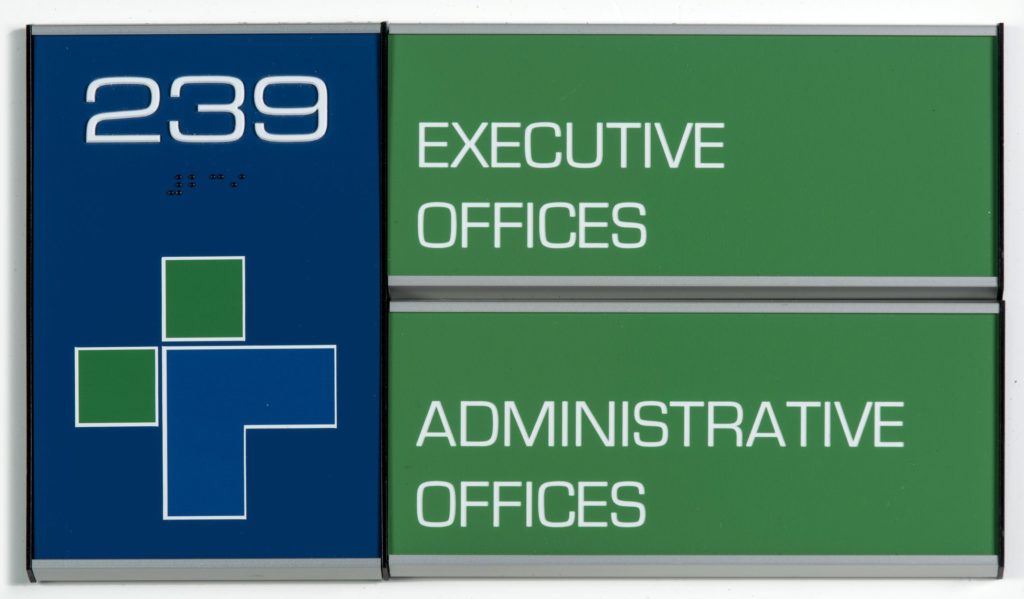
Another advantage of ADA-compliant modular signs is the cost and time savings that come from the ability to change the content without having to purchase new signs, Bar says. The signs also cost less than custom-made signs, which are expensive and unique for the desired look.
Bar argues, “It’s giving you in a better price range (for) something that looks custom.”
Signs made out of plastic are less expensive than those from aluminum, but aluminum has greater longevity and a better appearance, according to Bar. The end caps at the edges of the frame, used for design purposes, can be made out of either material, depending on the desired price range for the sign.
Cvijanovic says, “One of the tradeoffs from selecting a modular system is if you pick a system, the signs look like signs in another facility. Modular signs tend to be contemporary in design and tend to be shallow, or not off the wall much. A lot of companies like them, but you do give up the ability to really personalize the signage design to the facility if you choose a modular system.”
Another advantage of a modular system is the ability to correct errors on paper instead of directly on the sign, which would have to be remade. “If you make a mistake, it’s tough to fix,” Bar says. “Logistically, it makes it less risky and easier to work with. Plus, designing a system from scratch is time-consuming, though it may be creative.”
“A modular system gives guidelines. One, two, three, and you’re done,” Bar continues. “Somebody installed it for you, and the end result is it’s very easy to get there.”
The needs for changing the content
The need for changing the content depends on the end-user, use of space, and instances where the message needs to be revised and modified.
“Change is dictated by the user and the use of their space,” Kelly says. “In today’s fast-growing medical industry, wings of hospitals are changing at a high rate and new medical office buildings are popping up across the country. Yet, but for a couple of modifications, the ADA regulations have been stable over the last 25 years.”
The frequency of the changes depends on the organization using the modular signs.
“Large institutions with many moving parts, such as hospitals and universities, would benefit greatly from modular ADA-compliant signage since they tend to be in states of constant growth and change,” Stewart explains. “Economically, modular signage just makes sense, and with so many different modular signage systems available on the market today, choosing aesthetically pleasing ones that complement decor is a no-brainer.”
With modular systems, “You can make very cool signs that are fun to look at,” Bar concludes. “You can create a lot of beautiful stuff for less money.”
